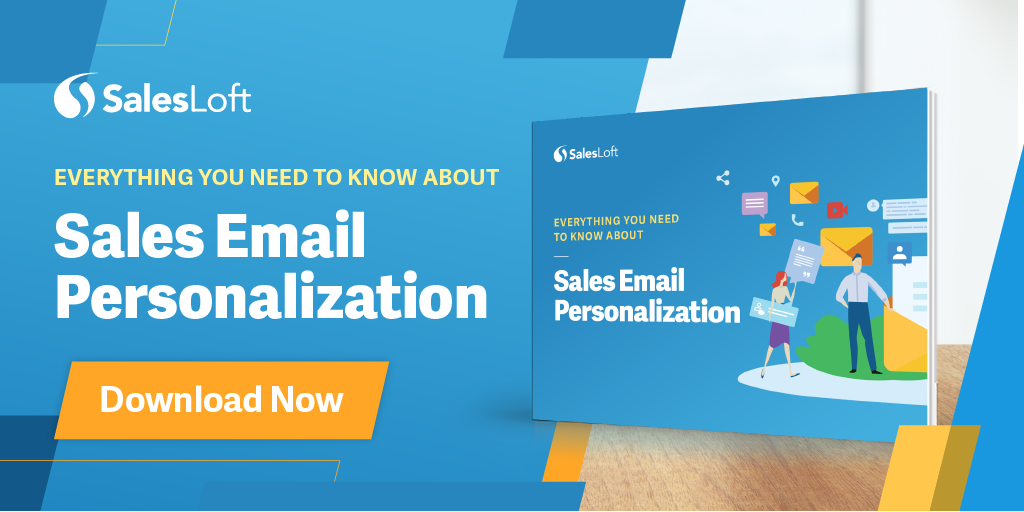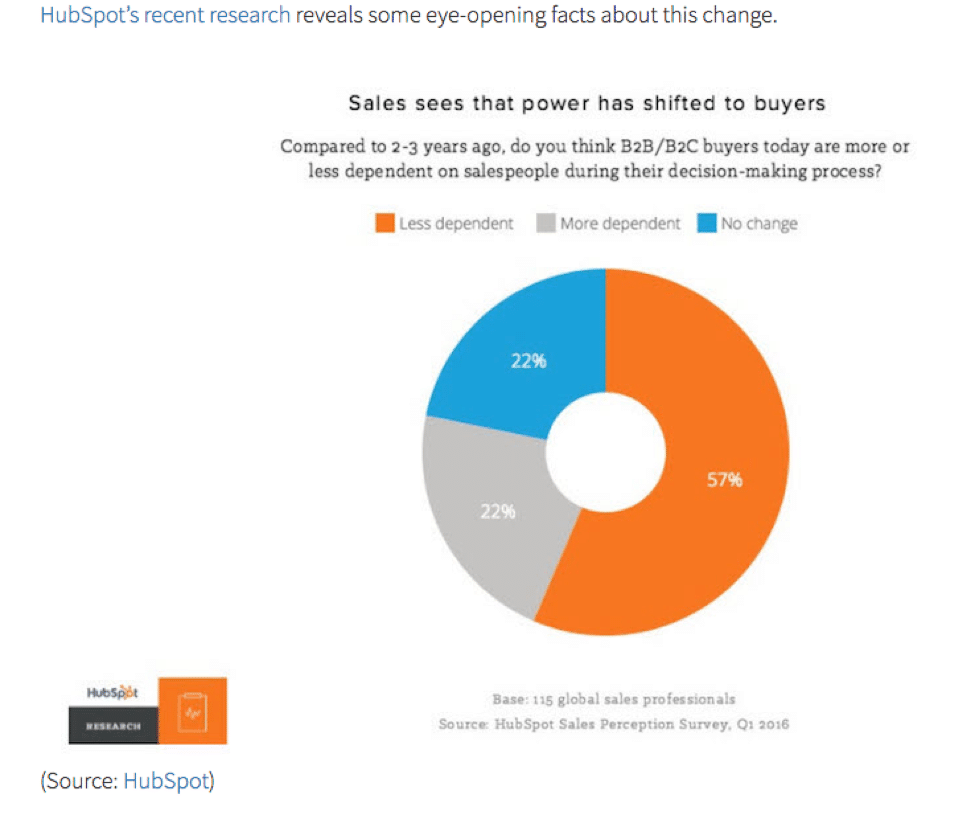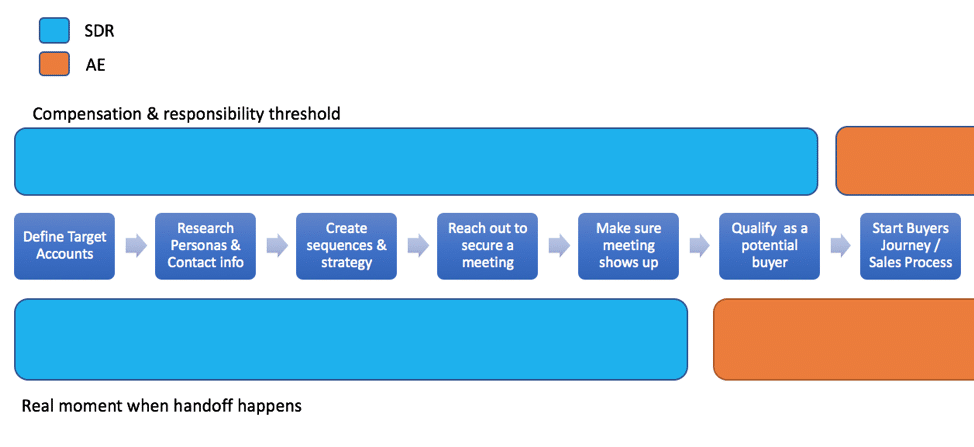Picture this: You launch a new product after you’ve spent countless hours, weeks, months, or even years determining what sets it apart from the competition and building a brand identity.
Sadly, it falls flat because you don’t have a positioning statement to guide your sales reps, marketers, and service and support teams to prove your value to your target audience.
![Free Resource: 10 Positioning Statement Templates [Download Now]](https://no-cache.hubspot.com/cta/default/53/8c61666f-cdca-4107-90d3-3e8f5720d881.png)
Whether this has happened to you or not, I’m here to help. In this post, I’ll explain what a positioning statement is, outline exactly how to write a positioning statement (with advice from experts), and go over some real-life positioning statement examples to inspire you.
Table of Contents
A positioning statement is an internal tools that help marketers appeal to their buyer personas in a relevant way. They're a must-have for any positioning strategy because they create a clear vision for your brand.
Having a clear and concise positioning statement is important because it gives potential consumers the ability to understand your business at first glance. Buyers want to know how your product and purpose differentiate you from the rest of the market, without buying the product first.
Here’s what Mike Sadowski, Founder and CEO of Brand24, told me when I asked him about positioning statements: “I once asked myself, ‘What is the real purpose of a positioning statement?’ My answer: to communicate to people for whom I create my brand that it's tailored perfectly for them, addressing all levels of their needs...I view the positioning statement as a message that convinces people that our brand and product are precisely what they desire.”
What is the purpose of a positioning statement?
The purpose of a positioning statement is to convey a brand's value proposition to its ideal customers. It also frames the brand's identity, goals, and distinguishing features within the context of the buyer’s experience.
To craft your positioning statement, you'll need to get clear on a few key facets of your business:
- Who you serve
- What value you offer
- How you position your offer
- Why you're in business
- What makes you different from the competition
Next, I'll talk about how a positioning statement differs from some other common guiding principles in a business marketing strategy.
(If you’re curious about what the "how" looks like, here it is.)
Unlike a mission statement, your positioning statement isn't public-facing. You don’t want to give away any competitive intelligence to your competitors, so it’s used as a source of truth to guide other processes, like the messaging for your marketing campaigns or the talking points salespeople use during 1:1 conversations.
At its core, your business’s positioning statement summarizes the value that your brand, products, and services bring to the target market.
A positioning statement is broader and it’s created after you've developed your business' value proposition. It also identifies the primary customer benefits — why someone needs your product or service.
Now that you understand the differences among some common business and marketing elements, here are the core elements of strategic marketing positioning that you'll need to know.
The Core Elements of Strategic Market Positioning
As I mentioned earlier, crafting your positioning statement starts with a good understanding of your company. This includes defining the following core elements:
- Target market
- Market category
- Customer pains
- Brand promise
- Brand identity and values
Target Audience
Your target audience is the "who" aspect of your positioning. Simply defined, it's the group of consumers you're targeting with your product or services.
They say that "the riches are in the niches." To me this means that, even if anyone can use your product or service, you should still be targeting specific buyers to maintain integrity and differentiation within your brand.
In my opinion, the best and most foolproof way to define a solid target audience is to create a buyer persona (a representation of your ideal customer).
Product Positioning
Product positioning should lead with the product's benefits rather than its features. A smart way to do this is to imagine your customer’s life before and after using your solution. Then, tell the story of what happens to them when they make that decision. That’s the benefit you’ll include in your product positioning.
Market Category
A market includes buyers and sellers. A category defines a specific segment of that market. Market categories can be as broad as "grocery store" and as niche as "vegetarian health food store." Market categories usually start out broad and get more niche as the businesses occupying that market expand their product and service offerings to the consumers in the market.
Whether your market category is developed or you're part of an emerging or niche market, I recommend defining who all potential buyers are, where they search for goods and services, and who has their attention. You'll want to define what your competition offers and how you can position your brand apart from those competitors.
Customer Pains
Customer pains are the problems or issues your target audience is experiencing that could be solved with products or services available in your market category. Your product or service should aim to address customer pains and offer a solution.
Brand Promise
Your brand promise is ultimately what the target audience or buyer persona stands to gain from using your product or service. It's what success looks like to them if their pain or problem is resolved.
Brand Identity
Brand identity is the personality of your business and includes both visible factors (such as logo design) and invisible ones (such as values or voice). Brand identity is one aspect of strategic market positioning that will set you apart from competitors and help you gain recognition from your target audience.
Values
Values guide how your business makes decisions within the context of your brand. They create the culture of your organization and leave a favorable impression on your target audience. They are the intangible methods with which you execute your mission and vision.
Featured Resource: 50 Examples of Company Values
Once you have a solid understanding of these core elements, you can begin crafting the positioning statement.
My Pro Tip: I recommend developing your business’ value proposition before writing your positioning statement. When you know the unique value you bring, it’s much easier to craft a statement that speaks directly to your target audience and describes how your product or service is the best solution for their pain points.
When writing and evaluating your positioning statement, keep the following tips in mind:
1. Create a vision board.
Positioning statements are written documents. Since they don’t include images, video, or other visuals, it can be challenging to communicate what your business is, who it serves, and why that matters in just a few sentences.
To bypass the initial blank page syndrome, create a vision board instead. A Columbia University study found that visual characteristics can trigger emotional responses, which can help you understand your target audience and what speaks to them.
To leverage this response, look for images that represent your customer in the environment where they need your product or service the most. Notice the emotions in the images, who is around your ideal customer in the image, and what they’re doing in the image to solve the problem.

Image Source
Creating a vision board that represents your target audience when they need your product the most can help make your positioning statement come to life.
2. Make it brief.
You have a short time to capture attention, so a brief positioning statement is much more likely to be read than a longer one.
Your brand’s positioning statement should be concise and to the point. Aim for no more than three to five sentences, if possible.
The wordier that your statement gets, the less factual it becomes. It then risks becoming more aspirational instead of what your business is, with more elements that are more inflated than grounded in truth.
Pro Tip: Fluff and unnecessary details are your worst enemy when it comes to being brief. Stay focused on the value your product or service provides, and get rid of anything else that distracts from that.
Heather Johnson, MedTech Marketing Consultant and President at OutWord Bound Communications, shared her advice with me, and it’s a great exercise for keeping it brief: “Keep asking “so what” until you get to the root of those answers. For example, a small business wants to acquire and retain more customers without spending tons of time fiddling with technology; your XYZ platform makes it happen by…”
3. Make it unique and memorable.
This statement should be unique to your company and the problems you aim to solve. When crafting your positioning statement, be sure to emphasize the distinctive qualities of your brand.
Buyers should be able to see the special value that your business can offer or solve for. Many markets are already saturated with products or services that are similar to your offering, so your statement should be able to capture their attention against the noise.
Pro Tip: I think Shelley Grieshop, Creative Writer at Totally Promotional, tip about exploiting personal history is a great way to make your positioning statement unique and memorable.
She said, “Select one thing your company does or offers that is uniquely related to your personal history and demographics. Exploit that tidbit in your marketing strategy and all communications to show your individuality and establish brand recognition. The bottom line: Your story is your value.”
4. Remain true to your business’s core values.
The positioning statement isn’t the time to get fancy and pitch a new angle for the business. Your brand’s positioning statement should accurately reflect the core values of your business.
Clear core values in your positioning statement also send messages to your internal team. They help new employees with better alignment. Besides letting consumers know your stances, core values help existing team members stay on the right track and continue to deliver on your brand’s promises.
Pro Tip: Clarity and authenticity are William Hogsett’s, CEO of Seota Digital Marketing, best practices for high-quality positioning statements. He says authenticity builds trust and credibility, so your positioning statement should be authentic and reflect your brand’s core values and strengths.
He said: “Incorporate elements of your brand’s story, mission, and personality into the statement to create a compelling narrative that resonates with your audience on an emotional level.”
5. Include what the brand delivers to consumers.
Your brand offering is a vital part of your positioning statement. It’s the main reason that customers are seeking you out, so when crafting your own, you need to cover these two bases:
- Who does your company serve?
- How does your company serve this group?
Succinctly state who your customer is and how you will help them in your positioning statement.
Pro Tip: Sai Sathish, B2B Marketing Leader and Founder at ConsaInsights, told me that considering your audience’s perspective is crucial. He says it’s easy to get carried away with what you think the best thing is about your brand when it should really be about what the best thing is for your audience.
He said: “I have had many instances where I thought my positioning statement was the most revolutionary one and would impress people in one go, but they failed miserably. So don’t brainstorm on how to highlight your company’s great aspects — simply back-calculate. Understand what they would like to hear and find that about your company and present it to them.”
6. Differentiate your business from the competition.
An effective positioning statement should articulate what differentiates a brand from its competition. Highlight your company’s unique qualities and how those qualities help serve your customers. You can even consider a niche marketing strategy.
Does your brand have cause-related campaigns? Differentiate your brand by highlighting your goals to give back.
Does your brand serve a previously underrepresented target audience? Let them know clearly and proudly that you fill that gap. If you’re not sure how to separate your product offer from your competitors, these competitive analysis templates can help you out.
There are so many different ways to stand out against the crowd, you just have to survey your competitors and see how you do it better.
Pro Tip: Bhavik Sarkhedi, CMO of Write Right, says that “[When creating a positioning statement] It’s crucial to articulate not only what your brand offers, but also how it differs from the competition.”
He adds, “Ask yourself: What can we offer that no one else can? Why should the customer choose us over others? This focused approach ensures that your brand’s message is clear and compelling, making it easier for customers to see the value in choosing your brand.”
7. Keep it simple.
In almost any circumstance, your team should be able to align key business decisions with your brand’s positioning statement because its simple and easy-to-understand nature.
The more complicated your statement becomes, the less convincing or engaging it will be. Make sure your business’ value and offering is unmistakable and buyers will understand and seek to learn more about it in their buyer’s journey.
8. Consult a colleague.
Just because positioning statements aren’t public-facing doesn’t mean they shouldn’t be easy to understand. Investors, new hires, and external agencies who work closely with your businesses will need to use this document, too.
After spending several hours perfecting every word, you might think what you’ve written is wonderful (and I’m not saying it isn’t) when it’s actually filled with jargon, acronyms, and features that aren’t clear to someone outside your company.
When you’re in your final stages, reach out to a colleague. Someone not directly involved with the writing process can give you a fresh and objective perspective to help identify any issues you’ve overlooked. A third party might even have an easier time placing themselves in your audience’s shoes.
My Pro Tip: You want helpful and actionable feedback, so I recommend telling your colleagues exactly what you’re looking for. For example, you could ask them to read for:
- Clarity - Does your positioning statement clearly communicate value?
- Consistency - Does your positioning statement align with your known brand image and values?
- Relevance - Is your positioning statement relevant to your target audience’s pain points?
- Impact - Does your positioning statement leave the reader interested in learning more?
You can use the template above to form a positioning statement for your startup or small business. Add the details of your target market, company, and the main points that make your product or service stand out from competitors. You can also download 10 more position statement templates for free below.

Each business is unique, and it's alright if your statement doesn't fit the template exactly, but I suggest including the main points below:
- A description of the target market.
- A description of the target market needs.
- How your business will meet their needs.
- What differentiates your product or service from the competition.
- Why consumers in your target market should believe your brand's claims.
You might need a little more inspiration before taking pen to paper and creating your own positioning statement. Here are some examples to get your creative juices flowing.
Positioning Statement Examples
I mentioned above that your positioning statement is a crucial part of your business and a guiding source of truth. So, for the most part, it’s away from the public eye and you’ll rarely find a business’ exact positioning statement floating around on the internet.
Because of that, I’ve used our positioning statement template to craft a few example statements for recognizable brands using the information we know about them.
Below are examples of positioning statements of well-known brands to give you a feel for how to create one for your business.
1. HubSpot

HubSpot Positioning Statement:
"Since 2006, HubSpot has been on a mission to make the world more inbound. Today, over 100,000 customers in more than 120 countries use HubSpot's award-winning software, services, and support to transform the way they attract, engage, and delight customers. Composed of HubSpot's CRM, Marketing Hub, Sales Hub, Service Hub, CMS Hub, and Operations Hub, HubSpot gives companies the tools they need to grow better."
Why I Like This Positioning Statement:
It starts with a clearly defined mission and track record to capture the attention of prospects. Then, HubSpot’s positioning statement notes its trustworthiness and variety of products to better service businesses looking to grow and scale for the future.
-
Connects with the target audience by showing global businesses its breadth of scalable solutions.
-
Sells its product(s) in a unique way by showcasing that these products are made to scale.
-
Highlights core values by emphasizing its focus on customer success and innovation.
-
Offers a clear and focused message by leaning into its value proposition and services.
2. Coca-Cola

Image Source
Coca-Cola Positioning Statement:
"For quality beverage seekers, Coca-Cola offers a wide range of the most refreshing options. Each creates a great experience for customers when they enjoy a Coca-Cola brand drink. Unlike other beverage options, Coca-Cola products inspire happiness and make a positive difference in customers' lives, and the brand is intensely focused on the needs of consumers and customers."
Why I Like This Positioning Statement:
While its product offering is beverages, Coca-Cola leads its positioning statement with the positive experience it wants to offer. It appeals to emotions and tells us consumers that we’re buying from a company that wants to better our lives — even with something as simple as a cold drink. It:
-
Connects with the target audience by focusing on beverage consumers looking for quality and satisfaction.
-
Sells its product(s) in a unique way by focusing on positive impact and using phrases like "inspire happiness" and "make a positive difference."
-
Highlights core values with a focus on quality products and customer experience.
-
Offers a clear and focused message that is easy to understand and highlights benefits without feeling salesy.
3. White Dog Distilling

Image Source
White Dog Distilling Positioning Statement:
"Founded in 2016 by the husband/wife team of Carlo and Alecia Catucci, White Dog Distilling stands for passion, spirit, and the journey from grain to glass. Bolstered by Carlo's background in physics and Alecia's culinary and product development experience, they set forth with one goal in mind: to produce high-quality distilled spirits that could appeal to both novice spirit drinkers and longtime aficionados alike."
Why I Like This Positioning Statement:
White Dog leads its positioning statement with the quality it delivers to customers. Offering locally sourced and sustainable ingredients attracts customers looking for good value versus price, with delicious taste. I think the statement also makes the brand accessible to those who aren’t well-versed in spirits.
-
Connects with the target audience by using the founders' story to connect with both novice and expert customers.
-
Sells its product(s) in a unique way by focusing on quality, craft, and innovation.
-
Highlights core values by showing how and why it's committed to using quality materials and processes.
-
Offers a clear and focused message by using the value proposition as the center, then highlighting how the founders create that value.
4. Alaska Airlines

Image Source
Alaska Airlines Positioning Statement:
"We are creating an airline people love. Each day, we're guided by our core values of own safety, do the right thing, be kindhearted, deliver performance, and be remarkable at work and in our communities. Alaska Airlines also fosters a diverse and inclusive culture and is an Equal Opportunity Employer."
Why I Like This Positioning Statement:
Alaska Airlines leads its positioning statement with love and heart. It introduces prospects to the brand feeling as though they’re more than typical transactions. Instead, it focuses on each customer as a unique individual who's worth delivering great service and inclusive experiences to.
-
Connects with the target audience with values that emphasize community, diversity, and inclusivity.
-
Sells its product(s) in a unique way by putting customers and their experience in the spotlight.
-
Highlights core values that matter to customers, like safety, ethics, kindness, and reliability.
-
Offers a clear and focused message by reinforcing its brand identity instead of creating a new set of benchmarks or expectations in the positioning statement.
5. Organic Bath Co.

Image Source
Organic Bath Co. Positioning Statement:
"If you're seeking clean and healthy ingredients in your body care routine, Organic Bath Co. offers a line of organic and natural skincare products that you can feel good about using. Trust in Organic Bath Co. for clean uncomplicated ingredients that will leave you feeling rejuvenated and cared for."
Why I Like This Positioning Statement:
I found that Organic Bath Co.’s positioning statement successfully conveys its focus on quality ingredients, health, and the value of rest. Prospects could be looking for a soap brand that not only has organic and safe ingredients, but also encourages its customers to indulge themselves in the relaxing experience of using its product line.
-
Connects with the target audience by finding a priority (clean, natural ingredients) and showing how the product meets that need.
-
Sells its product(s) in a unique way by emphasizing the feeling it gives customers as well as how the brand makes its products.
-
Highlights core values by focusing not only on company values, but the core values its target audience feels are most important.
-
Offers a clear and focused message by starting with what its audience is looking for, then sharing how the product meets those needs.
6. Amazon
 Image Source
Image Source
Amazon Positioning Statement:
"For consumers who want to purchase a wide range of products online with quick delivery, Amazon is a one-stop online shopping site. Amazon sets itself apart from other online retailers with its customer obsession, passion for innovation, and commitment to operational excellence."
Why I Like This Positioning Statement:
I like that Amazon cuts straight to the chase with its positioning statement. It clearly outlines that its store is a quick way for its customers to find everything they need, to better help the customer achieve their goals.
-
Connects with the target audience by speaking to the needs of busy customers who prioritize convenience.
-
Sells its product(s) in a unique way by emphasizing its commitment to customers, experience, and operational excellence.
-
Highlights core values by selecting the most relevant brand values and weaving them into the positioning statement.
-
Offers a clear and focused message by summarizing the value proposition of the platform.
7. IMPACT

Image Source
IMPACT's Positioning Statement:
"Empower your business to thrive with IMPACT. Our They Ask, You Answer approach and consulting services in content marketing, video sales, website strategy, design, and more help you take ownership of your digital sales and marketing. Find out how you can achieve remarkable results and become a trusted voice in your industry with IMPACT."
Why I Like This Positioning Statement:
I think IMPACT’s positioning statement expertly explains how it goes against the grain to better serve its customers in the market, by eliminating the cycle of dependency. This approach is unique and will attract many prospects to want to learn more about its solutions.
-
Connects with the target audience by speaking directly to business owners and marketers who are seeking a solution to marketing dependencies.
-
Sells its product(s) in a unique way by clearly outlining what it does and how it accomplishes goals with clients.
-
Highlights core values like empowerment, innovation, and trust with a quick explanation of the process and desired outcomes.
-
Offers a clear and focused message by packing the most useful terms and ideas into one powerful paragraph.
8. Bandwagon Fan Club

Image Source
Bandwagon Fan Club Positioning Statement:
"Experience the future of fandom with Bandwagon Fan Club. Our Proof of Experience™ blockchain technology connects sports and entertainment lovers directly with their favorite artists, teams, and entertainers. Choose Bandwagon Fan Club to create, own, and preserve history with cutting-edge technology."
Why I Like This Positioning Statement:
When a product is tough to understand, doubt can creep in and possibly turn customers away. I can see how that could happen with Bandwagon Fan Club since it uses newer technology, but I was impressed by its direct and clear positioning statement. It explains exactly how its technology connects fans directly to their favorite performers and teams and narrows in on the end value.
-
Connects with the target audience by centering on the people who will want this product — sports and entertainment super fans.
-
Sells its product(s) in a unique way with exclusive technology mentions.
-
Highlights core values by emphasizing its customer focus and innovation.
-
Offers a clear and focused message — that fans can use this technology to own a unique piece of event history.
9. Gro Intelligence

Image Source
Gro Intelligence Positioning Statement:
"Develop a holistic data-driven understanding of your impact as a business in the agriculture or climate science industries with Gro Intelligence. We offer live data, machine learning, and domain expertise to provide honest answers where ecology meets economy."
Why I Like This Positioning Statement:
This positioning statement starts with the problem it solves — helping businesses see their impact with data. Then, it explains the technology it uses to show that impact, which builds trust with those potential customers. I like that it:
-
Connects with the target audience by targeting businesses in the agriculture and climate sciences industries.
-
Sells its product(s) in a unique way by naming the technologies it uses to collect data insights.
-
Highlights core values with terms like honest, holistic, economy, and ecology. This word choice quickly communicates what is most important to this brand.
-
Offers a clear and focused message by focusing on product benefits and how the brand delivers those benefits.
10. Nike

Image Source
Nike Positioning Statement:
"For athletes in need of high-quality, fashionable athletic wear, Nike offers customers top-performing sports apparel and shoes made of the highest quality materials. Its products are the most advanced in the athletic apparel industry because of Nike's commitment to innovation and investment in the latest technologies."
Why I Like This Positioning Statement:
Nike’s positioning statement does an excellent job of speaking to its target audience by clearly outlining its range of products to better serve athletes. I also like that it uses inclusive language to define what an athlete is, letting hobbyists and professionals alike know that they can derive value from its product line.
-
Connects with the target audience by identifying who uses these products and what they need.
-
Sells its product(s) in a unique way through emphasis on innovation and technology in athletic gear production.
-
Highlights core values by combining how this brand differentiates itself with a diverse range of customer needs.
-
Offers a clear and focused message that is straightforward and covers the most important qualities of its products.
11. Thrive Market

Image Source
Thrive Market Positioning Statement:
"Thrive Market is an online, membership-based market making the highest-quality, healthy, and sustainable products available for every budget, lifestyle, and geography."
Why I Like This Positioning Statement:
Short and to the point, Thrive Market lets prospects know exactly what it has to offer in a single sentence. Prospects won’t have to guess what type of product they can find from it, and they also know that their line must be extremely versatile, too.
-
Connects with the target audience by leading with health and sustainability.
-
Sells its product(s) in a unique way by highlighting the membership aspect of its offer.
-
Highlights core values by emphasizing quality, health, budget, lifestyle, and location.
-
Offers a clear and focused message with a single-sentence positioning statement that is both well-defined and easy to understand.
12. Gig Wage

Image Source
Gig Wage Positioning Statement:
"Gig Wage uses proprietary technology for payroll services and compliance to offer control and flexibility to contractor-dependent businesses. This platform is specifically for the 1099 economy to manage, pay, and support happy independent workers."
Why I Like This Positioning Statement:
This statement narrows its focus to a collection of employers that need a solution for 1099 workers. Then, it covers what it offers to solve a set of common problems for that audience.
-
Connects with the target audience by talking about the needs of both employees and independent contractors.
-
Sells its product(s) in a unique way by emphasizing proprietary technology and how that tech can help.
-
Highlights core values with a focus on a desired outcome — happy independent workers.
-
Offers a clear and focused message. Some positioning statements need to include industry-specific terms that not everyone is familiar with. But this statement pairs those terms with simple language that makes it easy for anyone to read.
13. Mural

Image Source
Mural Positioning Statement:
"For organizations who need visual collaboration at scale, Mural helps you bring imagination to work from anywhere with agile and design thinking methodologies, sales and consulting, and research and design, all in one platform. Join a growing network of global enterprises, consultancies, schools, and nonprofits using Mural to innovate."
Why I Like This Positioning Statement:
Leading with the primary value your business offers is a smart strategy. This positioning statement quickly lets consumers know you can use this product to visually collaborate from a range of locations. It also offers proof that you can trust this product because it's used by a diverse network of businesses.
-
Connects with the target audience by making the need for visual collaboration a priority, then sharing what kinds of companies are already using this tool.
-
Sells its product(s) in a unique way by highlighting specific ways businesses and individual users can get value from this product.
-
Highlights core values with terms like innovate, collaboration, and imagination. This emphasizes those values for this brand and for companies who want to make those core values a priority.
-
Offers a clear and focused message by focusing the first sentence on what the product is and how to use it, then using the second sentence to show who is already using the product.
14. Apple

Image Source
Apple Positioning Statement:
"For individuals who want the best personal computer or mobile device, Apple leads the technology industry with the most innovative products. Apple emphasizes technological research and advancement and takes an innovative approach to business best practices — it considers the impact our products and processes have on its customers and the planet."
Why I Like This Positioning Statement:
This positioning statement for Apple appeals to people of all different backgrounds. It inspires them to expect quality products made with intent to innovate in a way that helps people and the environment. I think it's also a great example of how to gain a prospects' trust by emphasizing industry authority.
-
Connects with the target audience by aligning itself with people who want "the best." It also emphasizes the brand's leadership in the industry.
-
Sells its product(s) in a unique way with emphasis on innovative approaches to research and technological advancement.
-
Highlights core values by mentioning the customer and environmental impact its products and processes have.
-
Offers a clear and focused message that quickly communicates the most important aspects of the brand and products.
15. McDonald's

Image Source
McDonald's Positioning Statement:
"McDonald's is a leader in the fast-food industry, with quick, friendly service and consistency across thousands of convenient locations. McDonald's' dedication to improving operations and customer satisfaction sets it apart from other fast-food restaurants."
Why I Like This Positioning Statement:
McDonald’s doesn’t narrow its target audience, but instead panders to individuals of all sorts looking for a fast and satisfying service. It also leads with its position as an industry leader to gain prospect trust.
-
Connects with the target audience by highlighting the qualities a person might seek in a fast food restaurant. This strategy is effective because it appeals to a broad audience in a specific situation.
-
Sells its product(s) in a unique way by mentioning how its operations and customer satisfaction goals differ from a set of competitors. It doesn't compare itself to every restaurant, only fast-food spots.
-
Highlights core values by leading the positioning statement with speed, service, convenience, and consistency.
-
Offers a clear and focused message in just two simple sentences, this statement shares what is most important to this brand in a compelling way.
16. Beautycounter

Image Source
Beautycounter Positioning Statement:
"One by one, we are leading a movement to a future where all beauty is clean beauty. We are powered by people, and our collective mission is to get safer products into the hands of everyone. Formulate, advocate, and educate—that’s our motto for creating products that truly perform while holding ourselves to unparalleled standards of safety. Why? It’s really this simple: beauty should be good for you."
Why I Like This Positioning Statement:
Unlike other beauty brands that strive to fix or perfect customers’ complexions without much focus on ingredients, Beautycounter takes the unique stance that beauty should be good for more than your looks. I think its unique focus on cleaner, safer ingredients will attract customers looking to maintain their complexions instead of a temporary fix.
-
Connects with the target audience by advocating for cleaner, safer products on behalf of beauty lovers.
-
Sells its product(s) in a unique way by communicating higher-than-average safety standards.
-
Highlights core values like education and safety, and supporting people looking for clean beauty products.
-
Offers a clear and focused message by outlining a clear and easy-to-understand goal, then sharing how it plans to meet that goal.
Craft a Positioning Statement for Your Business
Competition online makes crafting a great positioning statement more important than ever, but I see this as a unique opportunity to make your business stand out, boast your unique value, and connect with your audience.
If you leverage the tips and insights from the experts I spoke to, you can create a positioning statement that paints a clear roadmap for business growth.
Editor's note: This post was originally published in August 2020 and has been updated for comprehensiveness.
















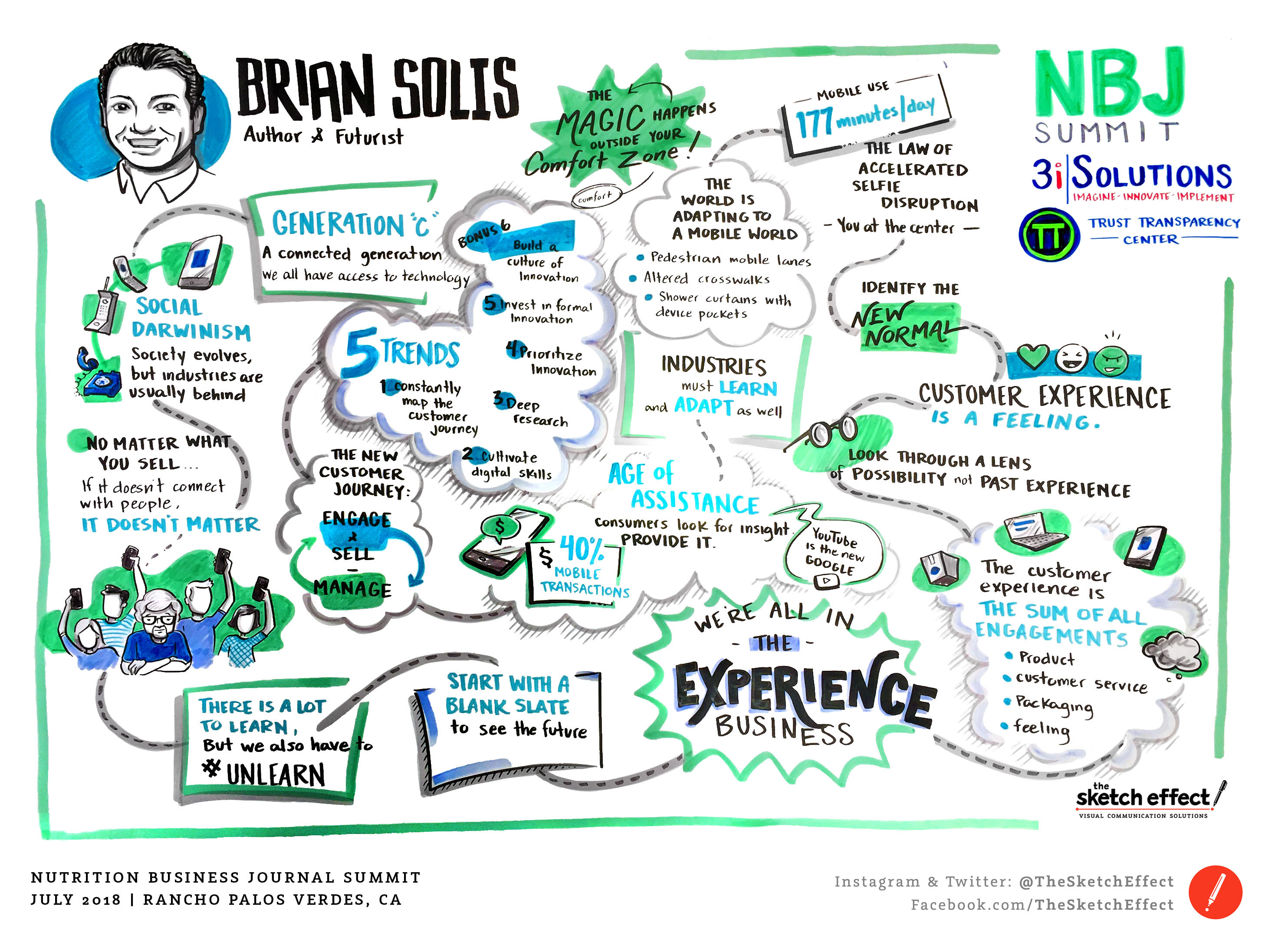 In July 2018, I had a chance to speak in Rancho Palo Verdes at the NBJ Summit. I think I would move to the area given the opportunity. It’s a wonderful oasis in between the [INSERT ADJECTIVE/S HERE] of Southern California and the serenity of a beachside community.
In July 2018, I had a chance to speak in Rancho Palo Verdes at the NBJ Summit. I think I would move to the area given the opportunity. It’s a wonderful oasis in between the [INSERT ADJECTIVE/S HERE] of Southern California and the serenity of a beachside community.

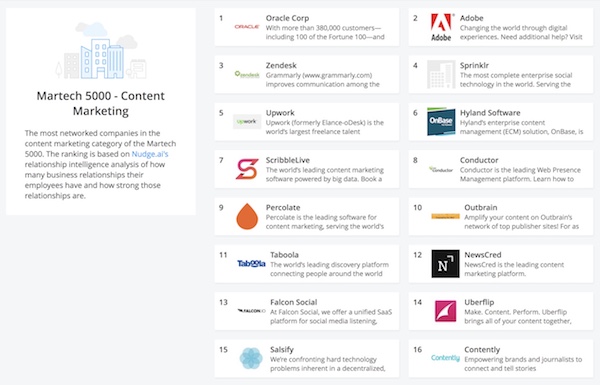
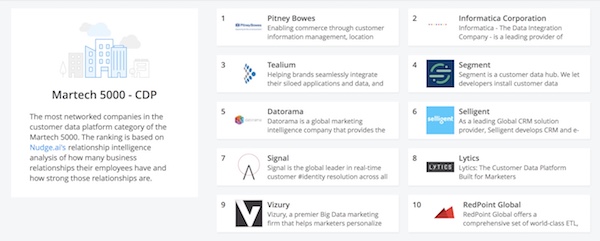






![Free Resource: 10 Positioning Statement Templates [Download Now]](https://no-cache.hubspot.com/cta/default/53/8c61666f-cdca-4107-90d3-3e8f5720d881.png)
























